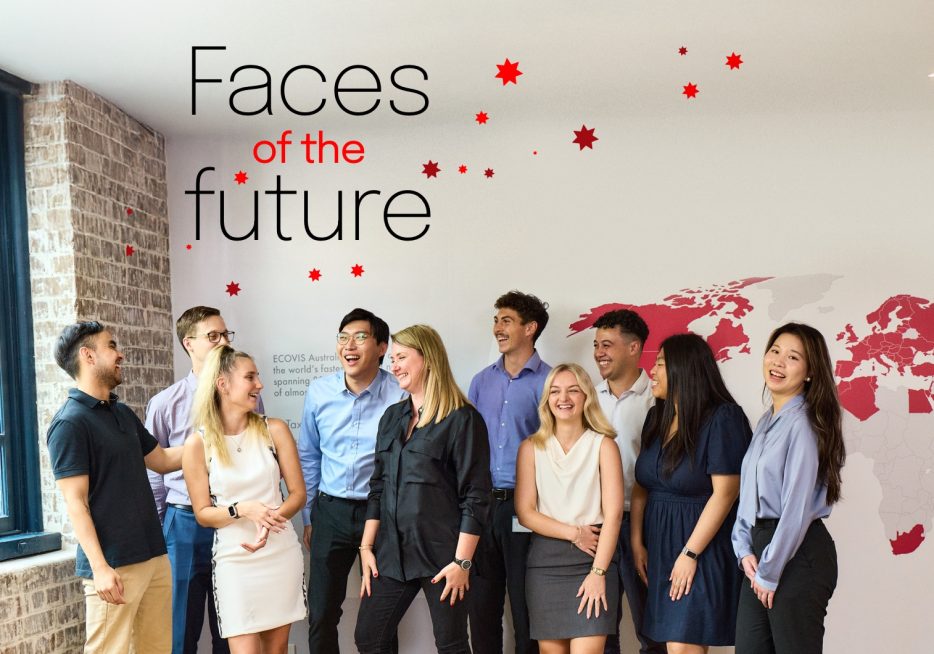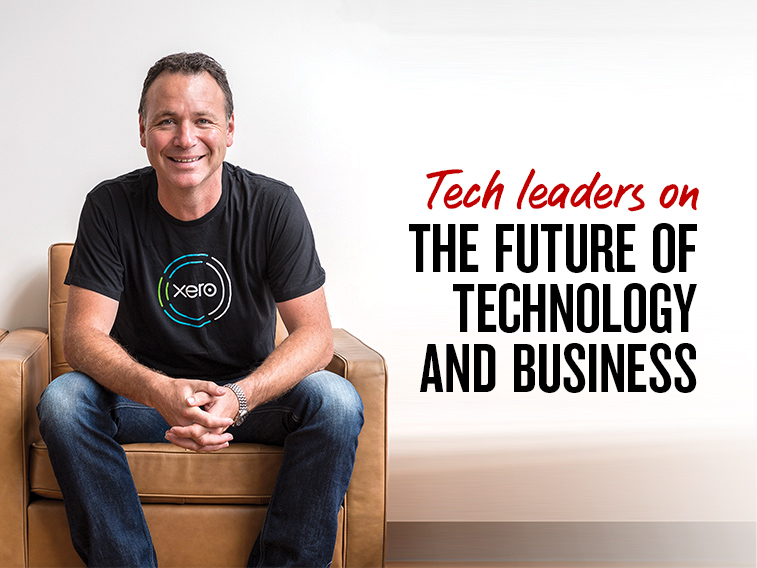Having passionate young professionals on the team is proving a powerful differentiator for Ecovis director Elissa Lippiatt.


Video
High-tech trends that will change the way you do business. Three Australian ICT leaders share their thoughts.

Senior executives from tech giants Xero, LinkedIn and Salesforce talk about the future of their platforms and the high-tech trends Australian businesses should be across in the digital era.
DRIVING TOWARDS DIGITAL
Trent Innes, Xero Australia Managing Director
“Remember the last time your business wrote or received a cheque? A couple of decades ago it was standard business practice and online banking wasn’t widespread. Now, the reverse is true. Businesses and individuals have accepted online banking technology unconditionally, and making and receiving payments electronically has become entirely unremarkable.
We’re seeing the same happening with cloud accounting and online payroll software.
Business owners are making the conscious decision to switch after investigating the case for doing so (shorter payment times, reduced administration and compliance burden, etc.) and finding it a compelling one.
According to Xero research, 40 per cent of Australian enterprises have embraced cloud accounting already, and estimates suggest they’re saving themselves at least 10 hours a week in compliance as a result. The government is pushing things along. It’s introduced Single Touch Payroll (STP), a reporting change that requires companies to report payments, like wages and superannuation, electronically to the Australian Tax Office at the time they’re made. Introduced in July 2018 for businesses with 20 or more employees, the requirement will be extended to include all small businesses from 1 July, 2019.
Connecting desktop accounting software to government systems can be challenging and, just as the introduction of the Goods and Services Tax (GST) in 1999 forced businesses to overhaul their accounting practices, STP will accelerate migration to the cloud.
E-invoicing – a system to enable the automated direct exchange of invoices between suppliers’ and customers’ accounting systems – is also in the pipeline.
From accounting system to platform
Xero began life as a cloud accounting software supplier but in this rapidly digitising business landscape, we’ve assumed a much broader role.
Today, we’re a platform business focused on expanding our range of digital service offerings.
We’re doing this by continuing to grow the Xero ecosystem of apps – specialist applications for activities like rostering, point-of-sale and inventory management, which link seamlessly with the Xero platform – and by acquiring pieces of foundational technology.
Last year, Xero bought Hubdoc, a software program that helps automate the accounting process by capturing data from bills and statements.
We’re already one of Australia’s largest online payroll providers and, as STP rolls out, we expect to see many more businesses seeking that service.
We’re always looking for new ways we can augment the platform to help small business customers do things smarter, faster and better.
Our goal is to make digitisation straightforward, pleasant and even fun, not an exercise that businesses are apprehensive about undertaking.”
CUSTOMER-CENTRIC WITH A CAPITAL C
John Moran, Salesforce Vice President
“Ever wondered what would happen if you completely transformed your business model? If you focused on delivering the most outstanding customer experiences at the centre of your business plan?
One of our customers did just that a couple of years back. A master jeweller with three stores in high-traffic Sydney locations and a staff of 35, he changed his business model to focus on a more intimate and personalised customer relationship. Today, he runs a three-person show from nondescript off-street premises, sees customers by appointment only – and is making more money than he ever did.
How? By turning a high-foot-traffic, mass-market jewellery business into a personalised customer-centric company. He knows exactly who his customers are and what they want – bespoke designs and personal service – and he works hard at giving it to them.
The term ‘customer-centric’ is bandied about frequently but what does it actually mean?
Businesses that enjoy this status have earned the trust of their customers by becoming attuned to their circumstances, requirements and challenges, and tailoring their products and services accordingly.
Unless you’re a small concern with just a handful of clients, the best way to do this is by collecting data from as wide a variety of sources as possible and analysing it to work out what makes your buyers tick.
Big business technology benefits
Historically, this sort of activity was complex and expensive, meaning it was almost the exclusive remit of big business.
The digital revolution has changed that. Technology has been ‘democratised’ and small and medium-sized enterprises now have access to the same tools and technologies as the big end of town.
That’s how it is at Salesforce. Our cloud model allows small companies to use the same powerful customer relationship management platform as Australia’s biggest businesses.
Helping companies of all shapes and sizes reinvent themselves to become more agile, responsive and customer-centric – and, consequently, better placed to thrive in an evolving business landscape – is the essence of what we do.
Salesforce was founded two decades ago with the aim of automating the sales process by giving companies the tools to manage customer relationships more efficiently, on the internet. Today, we’re about joining the dots, helping Australian businesses ensure they have consistently high-quality, informed interactions with their customers at every touchpoint, whether that’s in person, over the phone or via digital channels.
Getting smarter – learn and grow
For many smaller businesses, the biggest challenge is a skills gap. The technology to help them improve the experiences they offer to customers is affordable and available but getting the best out of it takes time and knowledge.
One of the ways we addressed this was by developing Trailhead, a free online learning platform. Its modules teach skills on how to transform into customer-centric businesses using Salesforce, like the Sydney jeweller.
Maya Angelou famously said, “people will forget what you said, people will forget what you did, but people will never forget how you made them feel”.
Knowing your customers, knowing the technology that’s available and using that knowledge to create customer experiences that are meaningful and memorable, will give your enterprise a better chance of succeeding in 2020 and beyond.”
BE YOUR OWN ONLINE MARKETER
Prue Cox, LinkedIn Director of Marketing Solutions
“Want to get better at attracting new customers and keeping existing ones coming back for more? For most Australian business owners, that’s a rhetorical question.
But in the digital era, the traditional cold call is deader than the dodo and ‘social selling’ is increasingly where it’s at in the business-to-business sphere.
The term refers to the use of social media platforms to connect with and cultivate prospects by sharing content, interacting online and building up trust until they’re ready to buy.
It’s a subtle, slow-burn approach – the polar opposite of the stereotypical hard sell, which sees potential customers subjected to extreme persuasion until an on-the-spot purchase is made.
From online business card to potent tool
For many small businesses and business owners, their professional presence online remains token or sporadic – the seldom-updated profile or company blog that petered out after the initial ideas were exhausted.
While that may have sufficed 10 years ago, when platforms like LinkedIn were in their infancy, we’ve expanded and evolved exponentially since then and so have the ways members engage with the platform.
Today, it’s a dynamic global forum where people share ideas and information, foster business relationships and market their product offerings, and we’ll continue to launch new services to help them do so more effectively.
If you’re a business owner, exploiting it to the full involves using it as more than just an electronic CV for yourself or an online brochure for your company.
Serious about social selling
Successful social selling takes time and concerted effort – ideally every day, not on an ad hoc basis when all the other tasks on your To Do list are done.
Getting your personal profile in order with a quality photo and succinct paragraph about yourself, and populating your company page with relevant content – case studies, white papers, vlogs and articles about your industry – are the first steps.
After that, it’s about systematically boosting your brand by connecting with and following customers and potential customers, ‘liking’ or ‘commenting’ on their posts and sharing interesting content, accompanied by your own commentary.
It shouldn’t be all about the boss, either. Historically, many businesses have been wary about allowing their employees to let loose on social platforms, but encouraging your people to share company content with their own networks can amplify your reach exponentially.
The ultimate goal? Increasing your sales pipeline by understanding the needs and wants of your customers and engaging regularly with the decision-makers who’ll one day be in the market for your product offerings.
Local businesses in ICT, financial services and construction have the process down pat, while many in other sectors are only just beginning to explore the possibilities.
The time is now
Think of yourself as an analogue kind of person and wondering whether eschewing the social selling scene is an option? You’ll do your business and your professional profile no favours if you don’t start rubbing shoulders with prospects in cyberspace – and soon.
This is how potential customers are finding you and researching whether you’re a company they want to engage with. Not having an active presence will leave you behind, in 2020 and beyond.”
© National Australia Bank Limited. ABN 12 004 044 937 AFSL and Australian Credit Licence 230686.